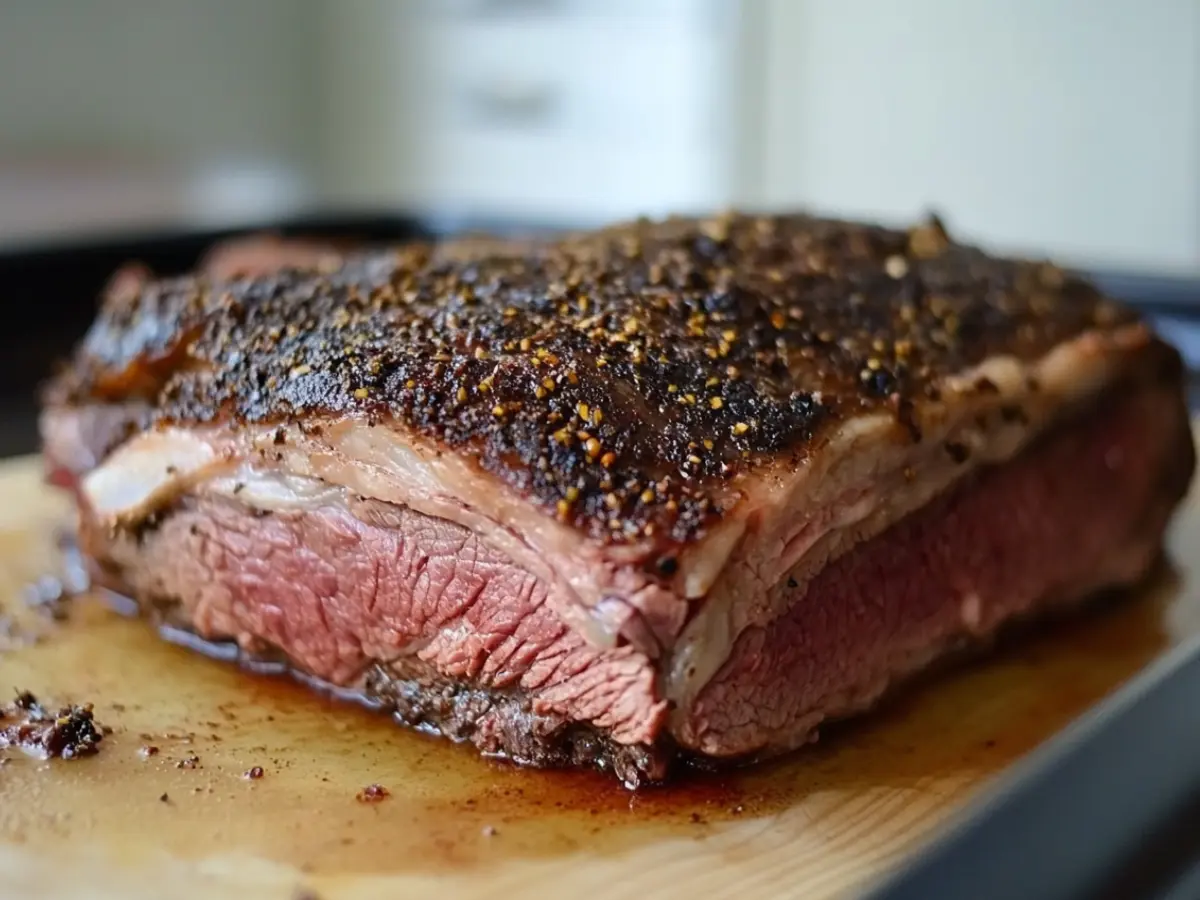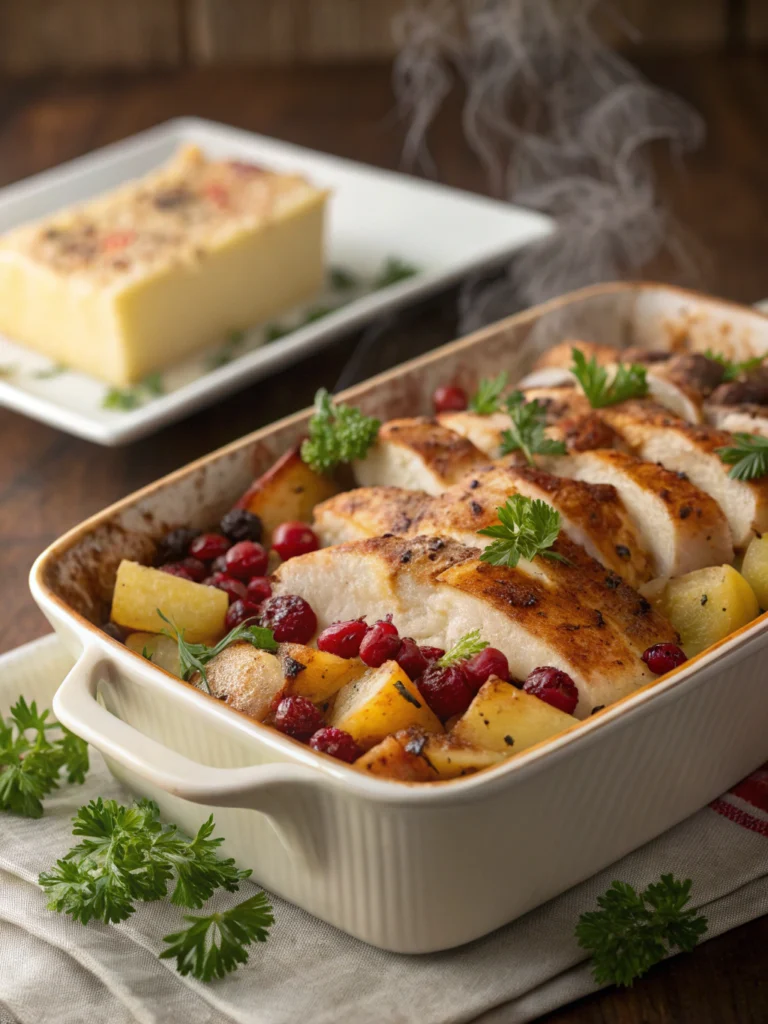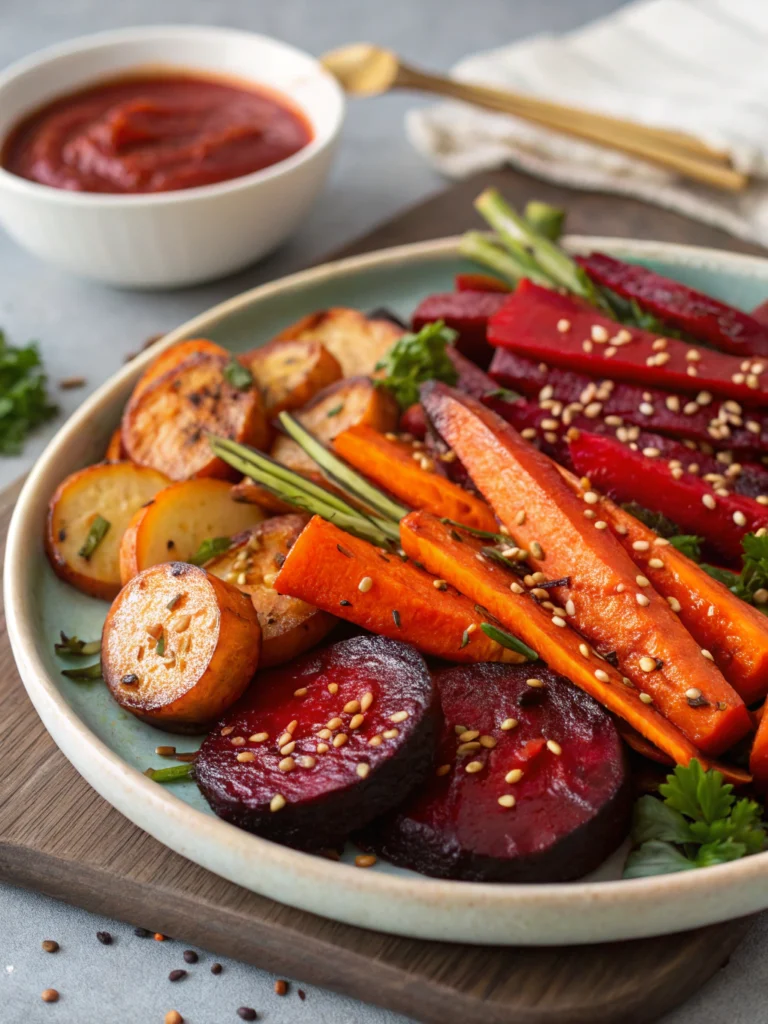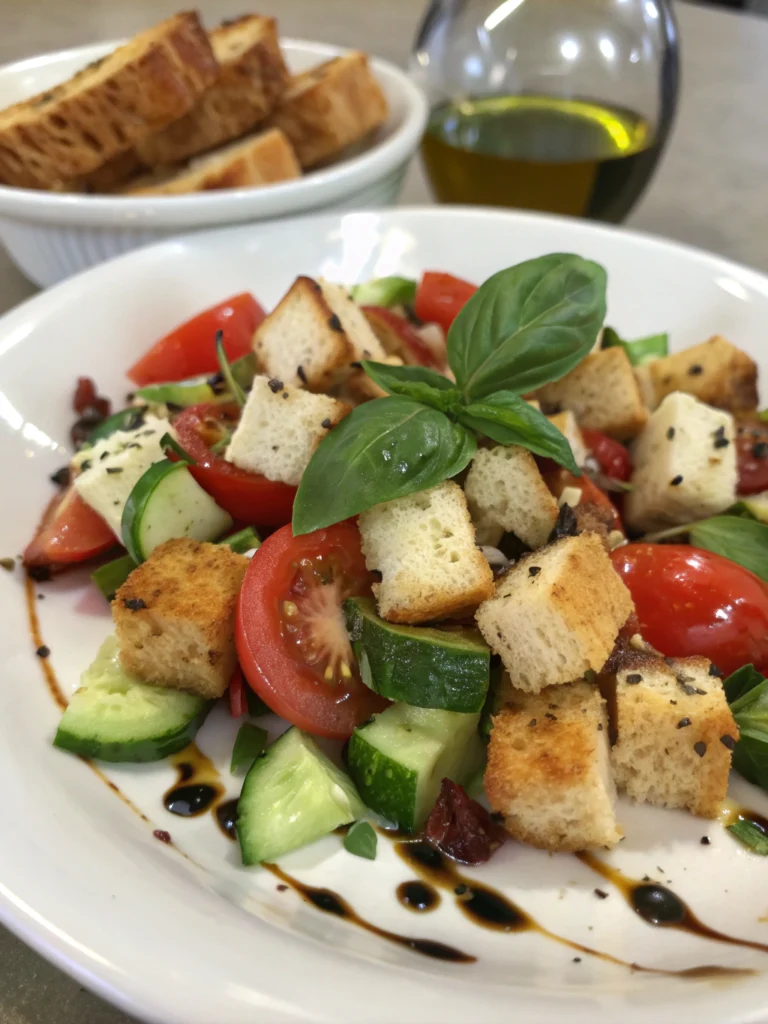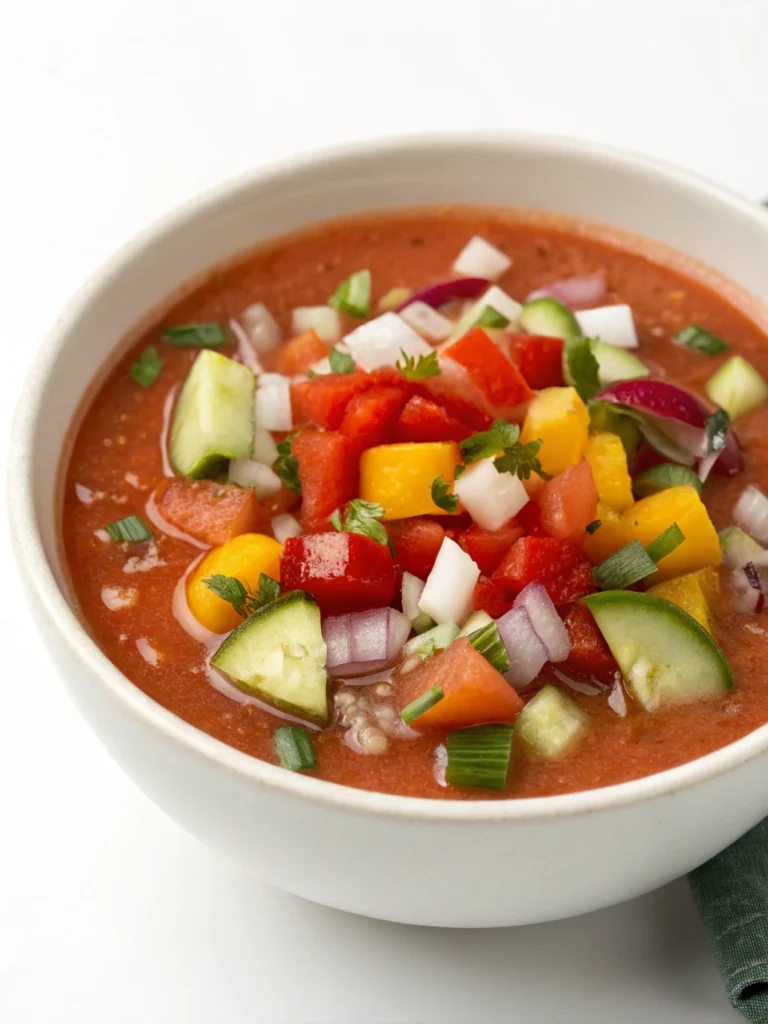There’s something special about a perfectly cooked Beef Brisket Recipe that brings people together. I still remember the first time I cooked a brisket for a family gathering; the tender, juicy slices that just melted in everyone’s mouths left a lasting impression. Since then, I’ve refined my technique to deliver a flavorful dish every time.
Cooking a great brisket is all about understanding its unique characteristics. It’s a cut of meat that’s meant for slow cooking, and when done right, it retains its shape beautifully, making it a showstopper on any dinner table. My ultimate recipe is the result of years of experimentation, and I’m excited to share it with you.
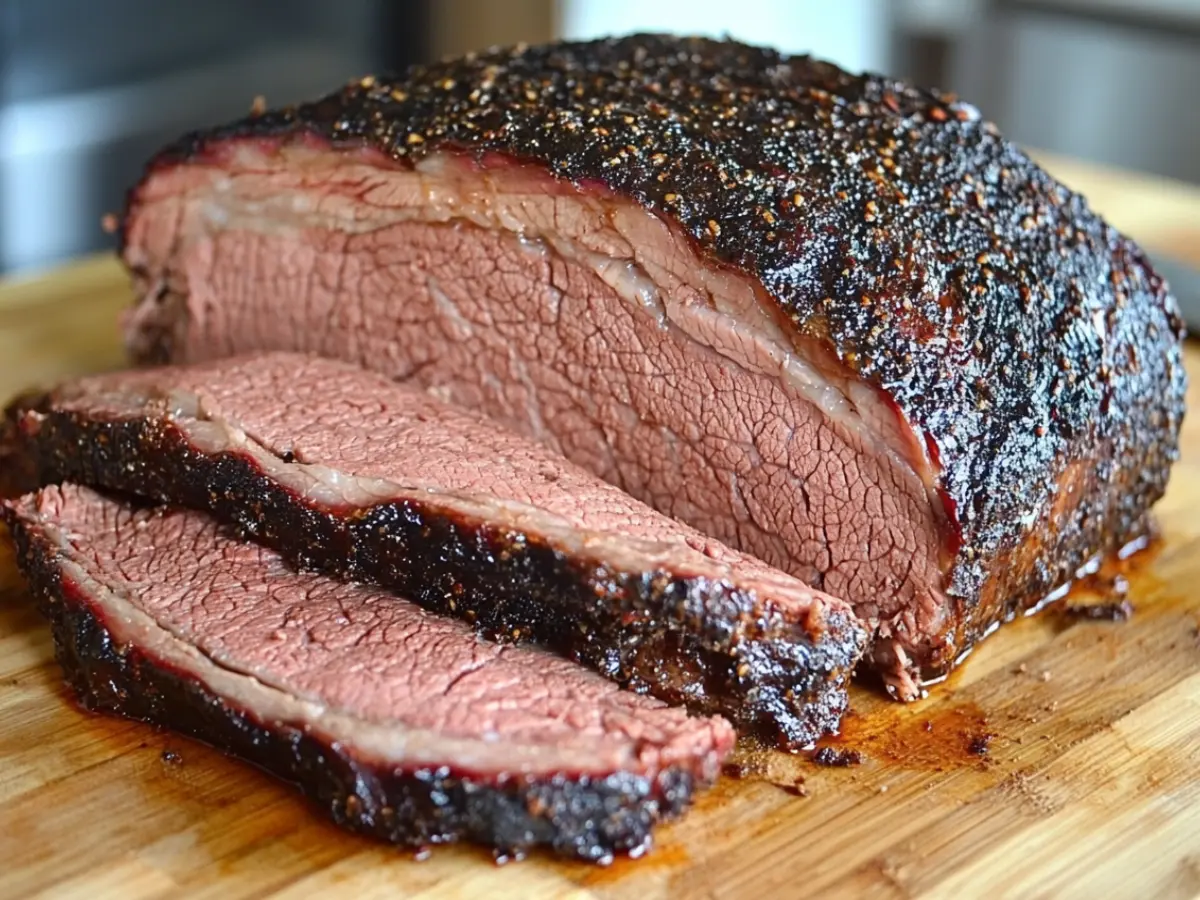
Key Takeaways
- Learn how to select the perfect brisket for your meal.
- Discover the secrets to preparing and cooking a tender, juicy brisket.
- Understand the importance of slow cooking in achieving the best flavor.
- Get tips on how to slice your brisket for the most appealing presentation.
- Find out why beef brisket is a great choice for special occasions and family gatherings.
Understanding Beef Brisket: What Makes It Special
Beef brisket, originating from the chest area of the cow, is a tough yet flavorful cut that becomes tender with slow cooking. This cut of meat is often misunderstood due to its toughness, but with the right techniques, it transforms into a tender, juicy delight.
What Is Beef Brisket?
Beef brisket is a large, tough cut of meat that comes from the lower chest or breast section of the cow. It contains a significant amount of connective tissue, which requires slow cooking to break down properly. This process transforms it into tender, flavorful meat.
Why Brisket Is Perfect for Slow Cooking
Brisket is unique among beef cuts because it holds its shape even after hours of slow cooking, allowing you to slice it rather than just shredding it. The muscle fibers in brisket have worked hard during the animal’s life, contributing to its rich flavor profile. Understanding the anatomy of brisket helps explain why it’s perfect for slow cooking methods like braising, smoking, or slow roasting, making it a versatile and delicious choice.
Selecting the Perfect Cut of Brisket
Selecting the ideal brisket cut is crucial for achieving that perfect balance of flavor and tenderness. When it comes to beef brisket, the cut you choose can significantly impact the final result.
Flat Cut vs. Point Cut
The brisket comes in two main cuts: the flat cut and the point cut. The flat cut, also known as the first cut, is leaner and more uniform in shape, making it easier to slice and ideal for presentations. On the other hand, the point cut is fattier, with more intramuscular fat, or marbling, which enhances the flavor and juiciness of the brisket. However, it can be more challenging to slice due to its irregular shape.
What to Look for When Buying Brisket
When buying beef brisket, look for a cut with good marbling throughout and a fat cap of about 1/4 inch thick. This fat will render during cooking, naturally basting the meat. A good quality brisket should have a deep red color and feel firm to the touch. Ideally, choose a cut from higher grades of beef like Choice or Prime for the best flavor and tenderness, and consider the point cut for richer flavor.
By considering these factors, you can select the perfect cut for your needs, whether you’re looking for a leaner flat cut or a richer point cut, and ensure that your brisket turns out deliciously, with a nice balance of flavor and a tender texture on one side of the cooking spectrum.
Essential Ingredients for My Beef Brisket Recipe
My beef brisket recipe relies heavily on a few key ingredients that elevate its flavor and texture. The right combination of elements is crucial for achieving tender, juicy brisket that’s full of flavor.
The Meat and Base Ingredients
The foundation of my recipe is a 4-5 pound first-cut or flat-cut brisket with some fat left on for added flavor and moisture. The base ingredients include kosher salt and freshly ground black pepper, which are essential for developing a flavorful crust on the meat.
I also use all-purpose flour to help thicken the cooking liquid and vegetable oil for browning the brisket. Additionally, yellow onions, garlic, and carrots add depth to the cooking liquid, while tomato paste enriches the overall flavor.
Spices and Seasonings for Maximum Flavor
To give my brisket maximum flavor, I use a blend of spices and seasonings. My spice blend includes paprika, onion powder, garlic powder, cumin, and mustard powder, which complement the rich beef flavor without overpowering it.
For those who enjoy a bit of sweetness, adding a small amount of brown sugar to the spice rub can help with caramelization and balance the savory elements.
Preparing Your Beef Brisket
Before you start cooking, it’s essential to prepare your beef brisket correctly. Proper preparation ensures that your brisket is tender, flavorful, and enjoyable.
Trimming and Seasoning
When preparing your beef brisket, the first step is to trim the fat cap to about 1/8 inch thickness. This thickness provides enough fat to keep the meat moist without being excessive.
Next, season your brisket generously on all sides with kosher salt and freshly ground black pepper at least an hour before cooking. This allows the seasonings to penetrate the meat, enhancing its natural flavors.
Creating the Perfect Rub
My perfect rub is a blend of brisket seasonings that includes brown sugar, paprika, onion powder, garlic powder, cumin, and mustard powder.
To apply the rub, sprinkle it evenly on all sides of the brisket, pressing it gently into the meat to ensure it adheres well and forms a flavorful crust during cooking. For the best results, let the seasoned brisket sit at room temperature for about 30-60 minutes before cooking.
My Foolproof Oven-Baked Beef Brisket Recipe
I’ve perfected my oven-baked beef brisket recipe to deliver consistently delicious results. This method ensures a tender, flavorful brisket that’s sure to become a family favorite.
Step-by-Step Cooking Instructions
To achieve the perfect brisket, follow these steps:
- Preheat your oven to 425°F to develop a flavorful crust on the meat.
- Place the seasoned brisket in a heavy roasting pan, fat side up, and roast uncovered for about 1 hour and 15 minutes until it develops a deep golden brown exterior.
- After the initial high-heat roasting, reduce the oven temperature to 300°F, add beef broth to the pan, and cover tightly with foil to create a moist cooking environment.
- Continue cooking the brisket for approximately 2.5 to 3 hours, or until the meat is fork-tender and registers around 200-205°F on an instant-read thermometer.
Temperature and Timing Guidelines
The key to a perfectly cooked brisket lies in the temperature and timing. Initially, roasting at 425°F for 1 hour and 15 minutes creates a flavorful crust. Then, reducing the temperature to 300°F and continuing to cook for about 2 hours and 30 minutes ensures tender meat. My guideline is to allow approximately 18 minutes per pound after the initial roasting, but the true test of doneness is tenderness.
Slow Cooker Alternative: Set It and Forget It
For those who prefer a hands-off approach to cooking, my beef brisket recipe can be easily adapted for a slow cooker. This method is perfect for busy days when you want to come home to a delicious, ready-to-eat meal.
Adapting the Recipe for a Slow Cooker
To cook brisket in a slow cooker, start by searing the seasoned beef brisket in a hot skillet to develop flavor. Then, transfer it to the slow cooker with your cooking liquid. Place brisket fat side up in the slow cooker to allow the fat to render and baste the meat as it cooks, keeping it moist and flavorful.
Slow Cooker Tips and Tricks
Cook the brisket on low for 8-10 hours or on high for 4-5 hours, depending on the size of your brisket—larger cuts will need the full cooking time. To achieve the best texture, avoid lifting the lid during cooking as this releases heat and can extend the cooking time by 20-30 minutes each time. Using a slow cooker is a great way to prepare a delicious beef meal with minimal effort, and it’s perfect for using a pot that’s not on the stovetop or in the oven.
Creating a Delicious Homemade BBQ Sauce
Elevate your brisket game with a rich, homemade BBQ sauce that’s both tangy and sweet. A well-crafted BBQ sauce can elevate the flavor of your brisket, making it a truly mouthwatering meal.
Sauce Ingredients and Preparation
To make this delicious BBQ sauce, you’ll need 2 garlic cloves (minced), 1/2 cup apple cider vinegar, 1 1/2 cups ketchup, 1/2 cup brown sugar (packed), 2 tsp EACH black pepper, onion powder, mustard powder, 1 tsp cayenne pepper, and 1 tbsp Worcestershire sauce. Combine these ingredients to create a classic BBQ flavor profile with a balance of sweet, tangy, and savory flavors.
How to Achieve the Perfect Consistency
To achieve the perfect consistency for your BBQ sauce, simmer the sauce ingredients together until slightly reduced. Then, use some of it to baste the brisket during the final cooking stage. After cooking the brisket, pour the cooking liquid into a saucepan and bring it to a simmer over medium-high heat. Reduce the sauce until it thickens to a syrupy consistency, noting that it will continue to thicken as it cools.
The Secret to Tender, Juicy Brisket
The secret to a mouthwatering brisket lies in understanding the importance of resting and slicing. Achieving tender, juicy brisket is not just about cooking it to the right temperature, but also about handling it correctly after cooking.
The Importance of Resting Your Meat
Resting your brisket is crucial for allowing the juices to redistribute throughout the meat, making it more tender and juicy. For maximum juiciness, let the brisket rest for at least 10 minutes before slicing. I recommend resting it for at least 30 minutes to an hour for larger cuts.
Slicing Against the Grain
When it’s time to serve, slicing against the grain is essential. This technique cuts through the muscle fibers rather than along them, making each bite more tender and easier to chew. To identify the grain, look for the lines running through the meat and cut perpendicular to them. In brisket, the grain can change direction, so adjust your slicing angle accordingly.
By understanding and implementing these two critical elements—proper resting time and slicing against the grain—you’ll be able to achieve a tender, juicy brisket that yields easily to a fork. This results in a more enjoyable dining experience, with each bite being full of flavor and tender texture.
Serving Suggestions: Complete Your Brisket Meal
To complete your brisket meal, consider these classic and creative serving suggestions. A well-rounded meal is not just about the brisket itself, but also about the accompanying sides that complement its rich, savory flavor.
Classic Side Dishes
Traditional Southern-style sides are a perfect match for beef brisket. Consider serving it with Homemade Southern Style Baked Beans, Corn Bread, or Creamy Corn Casserole. Other crowd-pleasers include classic creamy Coleslaw, Macaroni Salad, or Potato Salad. These sides provide a refreshing contrast to the hearty brisket.
Creative Serving Ideas
For a more innovative approach, try serving thinly sliced brisket on soft rolls as sliders, topped with extra BBQ sauce and coleslaw for a perfect balance of flavors and textures. You can also offer a variety of BBQ sauce options on the side, ranging from sweet and tangy to spicy, allowing your guests to customize their brisket experience according to their preferences.
Make-Ahead Tips and Storage
The beauty of beef brisket lies in its ability to be made ahead of time without sacrificing flavor. In fact, my beef brisket recipe is designed to be prepared in advance, making it perfect for special occasions or large gatherings.
Why Brisket Tastes Better the Next Day
Beef brisket is one of those magical dishes that actually improves in flavor when made ahead of time and reheated the next day. When stored overnight in the fridge with its cooking liquid, the brisket continues to absorb flavors and becomes more tender as the proteins further break down.
- To store cooked brisket, let it cool slightly, then refrigerate it in its cooking liquid in an airtight container for up to 3 days.
- The brisket can be made up to 3 days ahead of time and refrigerated.
Freezing and Reheating Instructions
For longer storage, brisket freezes exceptionally well—wrap it tightly in foil, then place in a freezer bag with some of the cooking liquid and freeze for up to 2 months.
- When reheating, thaw frozen brisket in the fridge for 1-2 days, then warm it slowly in a 300°F oven, covered with foil and some of the reserved liquid, until heated through (about 30-45 minutes).
- To reheat, transfer brisket only into a baking dish and cover. Bake at 180C/350F for 20 minutes or until warmed through.
Conclusion: Mastering the Art of Beef Brisket
Mastering the art of beef brisket is a journey worth taking. With patience and practice, you can create a truly mouthwatering dish. By following my ultimate brisket recipe and incorporating the tips shared throughout this guide, you’ll be well on your way to creating memorable meals.
Remember, the key to tender, juicy brisket lies in the low and slow cooking approach. Don’t be afraid to experiment with different spice rubs and sauces to develop your own signature brisket recipe. Whether it’s for a holiday gathering or a weekend barbecue, a well-prepared beef brisket is sure to impress.
FAQ
How long does it take to cook a brisket in the oven?
Cooking time varies depending on the size and thickness of the brisket, but it typically takes around 3-4 hours at 300°F (150°C). I recommend using a meat thermometer to ensure it reaches a safe internal temperature.
Can I cook brisket in a slow cooker instead of the oven?
Yes, you can adapt my recipe for a slow cooker. Simply season the brisket, place it in the slow cooker with some liquid, and cook on low for 8-10 hours. This method is perfect for a hands-off, tender brisket.
What’s the best way to slice a brisket to achieve tender results?
To get tender, juicy slices, it’s essential to slice against the grain. Identify the direction of the fibers and slice in the opposite direction using a sharp knife. This makes a big difference in the texture and overall enjoyment.
Can I make BBQ sauce from scratch, and is it worth it?
Absolutely, making homemade BBQ sauce is relatively simple and elevates your brisket to the next level. By using a combination of ingredients like ketchup, vinegar, sugar, and spices, you can create a rich, tangy sauce that complements the brisket perfectly.
How do I store leftover brisket, and can I freeze it?
Leftover brisket can be stored in the fridge for up to 3 days. To freeze, slice or shred the brisket, place it in an airtight container or freezer bag, and store it in the freezer for up to 3 months. Reheat it gently to maintain tenderness.
Why does brisket taste better the next day?
Brisket often tastes better the next day because the flavors have melded together, and the meat has had time to absorb the seasonings. Refrigerating it overnight allows the brisket to rest, making it even more tender and delicious when reheated.

